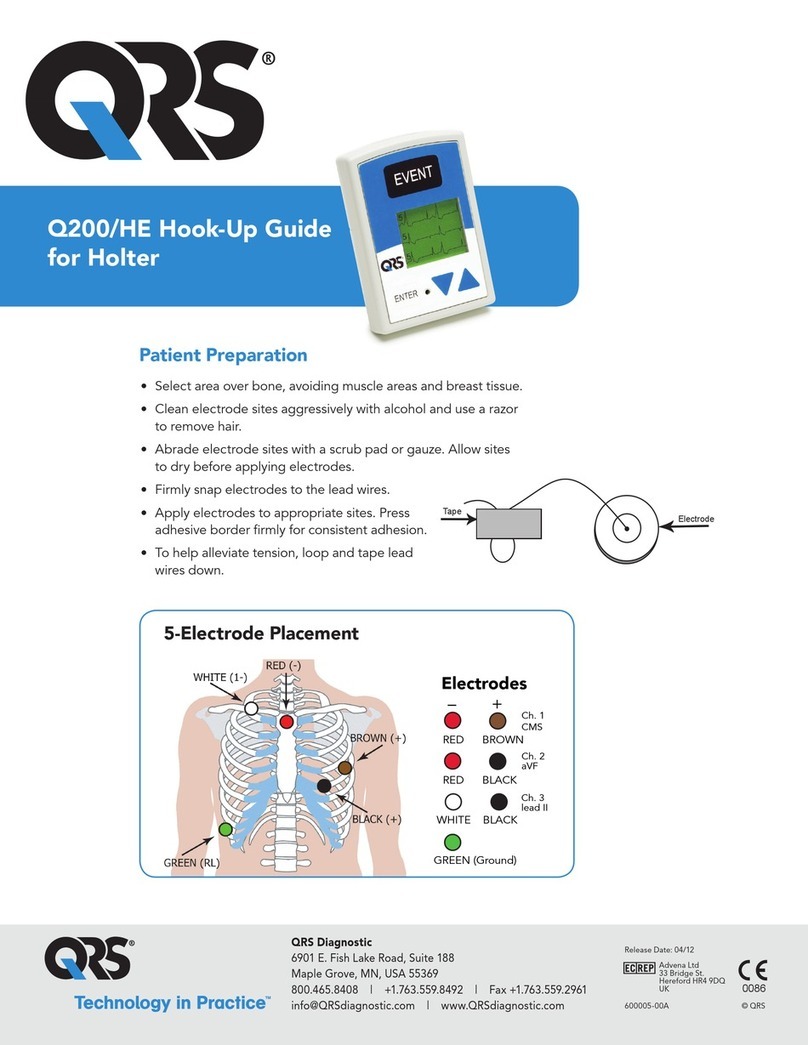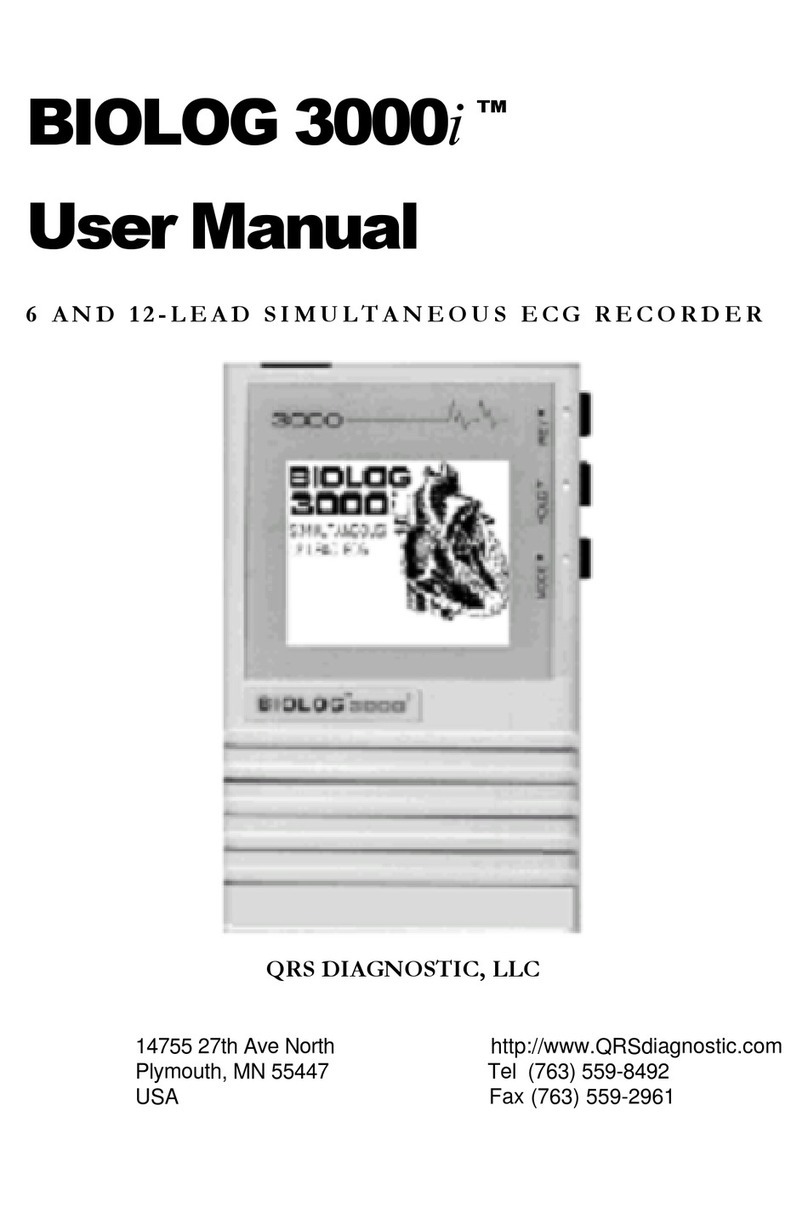
GB
In accordance with the EMC-regulations for medical products we are obliged by law to provide the
following information.
Guidance and manufacturer’s declaration – electromagnetic emissions
The equipment is intended for use in the electromagnetic environment specified below. The customer or the user
of the equipment should assure that it is used in such an environment.
Emissions test Compliance Electromagnetic environment – guidance
RF emissions, CISPR 11
Group 1
The equipment uses RF energy only for its
internal function. Therefore, its RF emissions
are very low and are not likely to cause any
interference in nearby electronic equipment.
RF emissions, CISPR 11 Class B
The equipment is suitable for use in all
establishments, including domestic establish-
ments and those directly connected to the
public low-voltage power supply network that
supplies buildings used for domestic purposes.
Harmonic emissions,
IEC 61000-3-2 (*) Class A
Voltage fluctuation/flicker emissions,
IEC 61000-3-3 (*) Complies
(*) Note: For devices with a power consumption between 75 W and 1000 W only.
Guidance and manufacturer’s declaration – electromagnetic immunity
The equipment is intended for use in the electromagnetic environment specified below. The customer or the user
of the equipment should assure that it is used in such an environment.
Immunity test IEC 60601 - test level Compliance level Electromagnetic environment –
guidance
Electrostatic
discharge (ESD),
IEC61000-4-2
±6 kV contact
±8 kV air
±6 kV contact
±8 kV air
Floors should be wood, concrete or
ceramic tile. If floors are covered
with synthetic material, the relative h
umidity should be at least 30%.
Electrical fast
transient/burst,
IEC 61000-4-4
±2 kV for power supply lines
±1 kV for input/output lines
±2 kV for power supply lines
±1 kV for input/output lines
Mains power quality should be that
of a typical commercial or hospital
environment.
Surge,
IEC 61000-4-5
±1 kV phase-to-phase
conductors
±2 kV phase-to-earth
±1 kV phase-to-phase
conductors
±2 kV phase-to-earth
Mains power quality should be that
of a typical commercial or hospital
environment.
Voltage dips, short
interruptions and
voltage variations
on power supply
input lines,
IEC 61000-4-11
<5% Uo!for ½cycle
(>95% dip)
40% Uo!for 5 cycles
(60% dip)
70% Uo!for 25 cycles
(30% dip)
<95% Uofor 5 s
(>5% dip)
<5% Uo!for ½cycle
(>95% dip)
40% Uo!for 5 cycles
(60% dip)
70% Uo!for 25 cycles
(30% dip)
<95% Uofor 5 s
(>5% dip)
Mains power quality should be that
of a typical commercial or hospital
environment.
If the user of the equipment requires
continued operation during power
mains interruptions, it is recommended
that the equipment be powered from
an uninterruptible power supply or a
battery.
Power frequency
(50/60 Hz) magnetic field,
IEC 61000-4-8
3 A/m 3 A/m Power frequency magnetic fields
should be at levels characteristic of a
typical location in a typical commercial
or hospital environment.
Note: Uois the a.c. mains voltage prior to application of the test level.
NOTES IN ACCORDANCE WITH EC-DIRECTIVE
AND MEDICAL DEVICE DIRECTIVE (MDD)
5






























